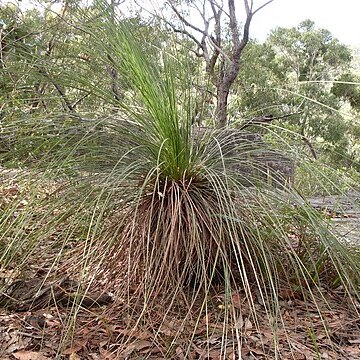A small bush. It grows 1 m high. The trunk is below the ground. The leaves are 1.7 m long and 6 mm wide. They are grey-green. They are triangle shaped in cross section. They form a clump at ground level. The flowers are carried on a tall woody stem up to 2 m high. The flowers form the top 80-100 cm of the stem. The flowers are creamy white in colour.

